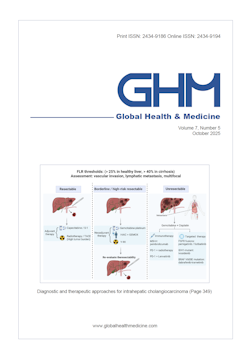Global Health & Medicine 2021;3(4):196-202.
Management of frailty under COVID-19 pandemic in Japan
Kojima M, Satake S, Osawa A, Arai H
Frailty prevention is a cornerstone for the extension of healthy life expectancy. It is a multi-dimensional construct that includes physical, mental, and social aspects. Frailty is reversible and can be attenuated by intervention; therefore, its early detection is important in primary and community care. The mainstream of disability prevention in Japan, which comprises the Japanese and local governments as well as healthcare workers, was a high-risk approach until 2014. Given the revision on Japan's long-term care insurance law, current ageing health policies have shifted to more population centric approach. Implements group activities called "Kayoi-no-ba" has been valued in Japan as disability prevention initiative. The Kihon Checklist – a 25-item questionnaire – has been broadly used by health experts and researchers to assess frailty in Japan. However, a new 15-item questionnaire has been newly developed to identify frailty and other health-related problems in older people of 75 years and above. This will enable providing the necessary support to frail individuals at any healthcare facility in local communities. The increase in frailty prevalence in older people has been concern during the COVID-19 pandemic. Home-based physical exercise programs are expected to be effective for frailty prevention. Utilization of information and communication technologies, social network services, and video calls has attracted attention for being effective tools to facilitate communication for older people during the pandemic. Further, life course approaches are needed to clarify the midlife risk of frailty development in later life.
DOI: 10.35772/ghm.2020.01118







